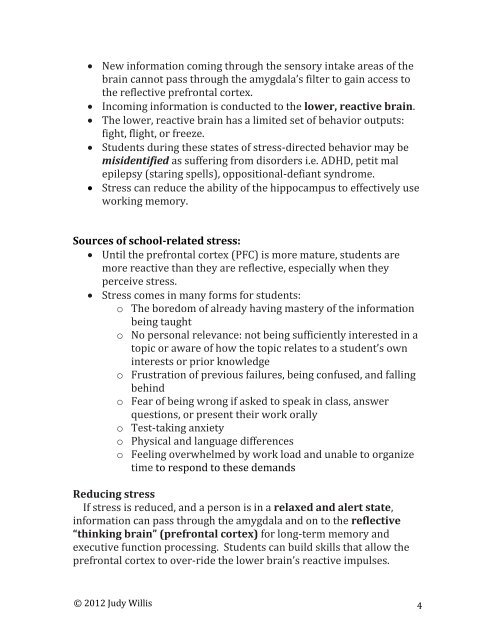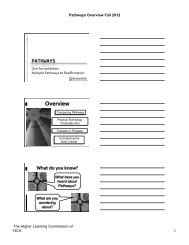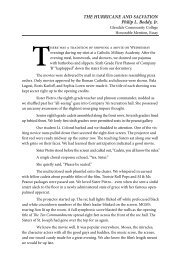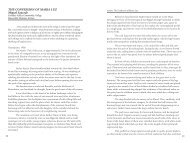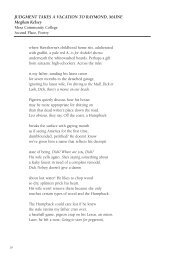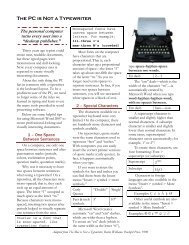Handout from Keynote Speaker, Dr. Judy Willis - Maricopa Center ...
Handout from Keynote Speaker, Dr. Judy Willis - Maricopa Center ...
Handout from Keynote Speaker, Dr. Judy Willis - Maricopa Center ...
Create successful ePaper yourself
Turn your PDF publications into a flip-book with our unique Google optimized e-Paper software.
New information coming through the sensory intake areas of the<br />
brain cannot pass through the amygdala’s filter to gain access to<br />
the reflective prefrontal cortex.<br />
Incoming information is conducted to the lower, reactive brain.<br />
The lower, reactive brain has a limited set of behavior outputs:<br />
fight, flight, or freeze.<br />
Students during these states of stress-directed behavior may be<br />
misidentified as suffering <strong>from</strong> disorders i.e. ADHD, petit mal<br />
epilepsy (staring spells), oppositional-defiant syndrome.<br />
Stress can reduce the ability of the hippocampus to effectively use<br />
working memory.<br />
Sources of school-related stress:<br />
Until the prefrontal cortex (PFC) is more mature, students are<br />
more reactive than they are reflective, especially when they<br />
perceive stress.<br />
Stress comes in many forms for students:<br />
o The boredom of already having mastery of the information<br />
being taught<br />
o No personal relevance: not being sufficiently interested in a<br />
topic or aware of how the topic relates to a student’s own<br />
interests or prior knowledge<br />
o Frustration of previous failures, being confused, and falling<br />
behind<br />
o Fear of being wrong if asked to speak in class, answer<br />
questions, or present their work orally<br />
o Test-taking anxiety<br />
o Physical and language differences<br />
o Feeling overwhelmed by work load and unable to organize<br />
time to respond to these demands<br />
Reducing stress<br />
If stress is reduced, and a person is in a relaxed and alert state,<br />
information can pass through the amygdala and on to the reflective<br />
“thinking brain” (prefrontal cortex) for long-term memory and<br />
executive function processing. Students can build skills that allow the<br />
prefrontal cortex to over-ride the lower brain’s reactive impulses.<br />
© 2012 <strong>Judy</strong> <strong>Willis</strong><br />
4


